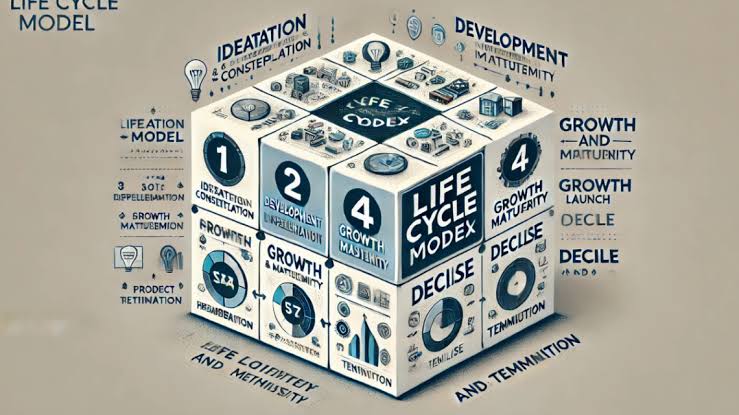Understanding the Life Cycle Model Four-Sided Box: A Simple Guide

The term “life cycle model four-sided box” might sound technical, but it’s actually a straightforward and insightful concept. This model provides a visual framework to understand how systems, processes, or products evolve over time. Whether you’re managing a project, launching a product, or analyzing growth strategies, this approach can help clarify the journey from start to finish. Let’s dive into what the life cycle model four-sided box is, how it works, and why it’s useful.
What Is the Life Cycle Model Four-Sided Box?
At its core, the life cycle model four-sided box is a visual representation that divides a system or process into four key stages. These stages outline the entire life cycle, from the initial idea to the end of its use or replacement. The four sides symbolize different phases, making it easy to see how everything connects.
Think of it as a box with each side representing a crucial part of the journey. These four sides are:
- Initiation: The beginning or planning phase.
- Growth: When the system or product expands and develops.
- Maturity: The phase where the system stabilizes and reaches its peak performance.
- Decline: The stage where the system slows down or is phased out.
Breaking Down the Four Sides of the Box
1. Initiation: The Starting Point
The initiation phase is where everything begins. In this stage, ideas are conceptualized, plans are developed, and the groundwork is laid for what’s to come.
- Key Features:
- Brainstorming and ideation.
- Research and feasibility studies.
- Setting goals and defining objectives.
- Allocating resources and creating a roadmap.
- Example: If you’re launching a product, this is when you’d identify a target audience, design the product, and plan the marketing strategy.
2. Growth: The Expansion Phase
Once the foundation is set, it’s time to grow. This phase focuses on building, scaling, and improving the system or product.
- Key Features:
- Increasing production or output.
- Enhancing visibility and engagement.
- Monitoring performance and making adjustments.
- Expanding market reach or user base.
- Example: A startup gaining traction, increasing its customer base, and refining its offerings falls into the growth phase.
3. Maturity: The Peak
Maturity is the sweet spot where the system or product is performing at its best. Stability and efficiency are key characteristics of this stage.
- Key Features:
- Optimized processes.
- Consistent performance.
- Focus on maintaining quality and customer satisfaction.
- Managing competition effectively.
- Example: A product with steady sales and loyal customers is in the maturity phase.
4. Decline: The Final Phase
All good things come to an end—or at least transition. The decline phase marks the slowdown in performance or relevance, leading to replacement, reinvention, or retirement.
- Key Features:
- Reduced demand or interest.
- Aging technology or outdated methods.
- Exploring alternatives or replacements.
- Planning for renewal or closure.
- Example: A once-popular gadget becoming obsolete as newer technology takes over.
Why Use the Life Cycle Model Four-Sided Box?
The life cycle model four-sided box isn’t just a tool for academics or businesses; it’s a practical framework for anyone managing change or growth. Here’s why it’s so effective:
- Clarity: Breaks down complex processes into manageable phases.
- Focus: Helps prioritize actions based on the current phase.
- Efficiency: Encourages proactive planning and decision-making.
- Versatility: Applies to various fields, from product development to project management.
Practical Applications of the Life Cycle Model
1. Business Management
Understand how your product or service evolves and plan for sustainability or innovation.
2. Project Planning
Divide your project into phases to ensure smooth execution and timely delivery.
3. Personal Growth
Apply the model to your personal goals, tracking your progress through initiation, growth, maturity, and eventual transformation.
4. Environmental Studies
Analyze the life cycle of products to assess their environmental impact, from creation to disposal.
Conclusion
The life cycle model four-sided box is a simple yet powerful framework for understanding growth, change, and decline. Whether you’re managing a project, developing a product, or analyzing a system, this model offers clarity and direction at every stage. By breaking down the process into initiation, growth, maturity, and decline, you can make informed decisions, optimize outcomes, and prepare for the future.
FAQs
1. What is the life cycle model four-sided box used for?
It’s a framework to understand the stages of growth and decline in systems, products, or processes.
2. Can the model be applied outside of business?
Yes! The model works for personal growth, environmental studies, education, and more.
3. How does this model help in decision-making?
By identifying the current phase, it helps prioritize actions and allocate resources effectively.
4. What’s the most challenging phase?
The decline phase can be tough, but proactive planning in earlier stages makes it easier to navigate.
5. Where can I learn more about life cycle models?
You can explore books, courses, or online resources on business strategy and project management.
Embrace the life cycle model four-sided box, and see how it transforms your approach to planning and problem-solving!






